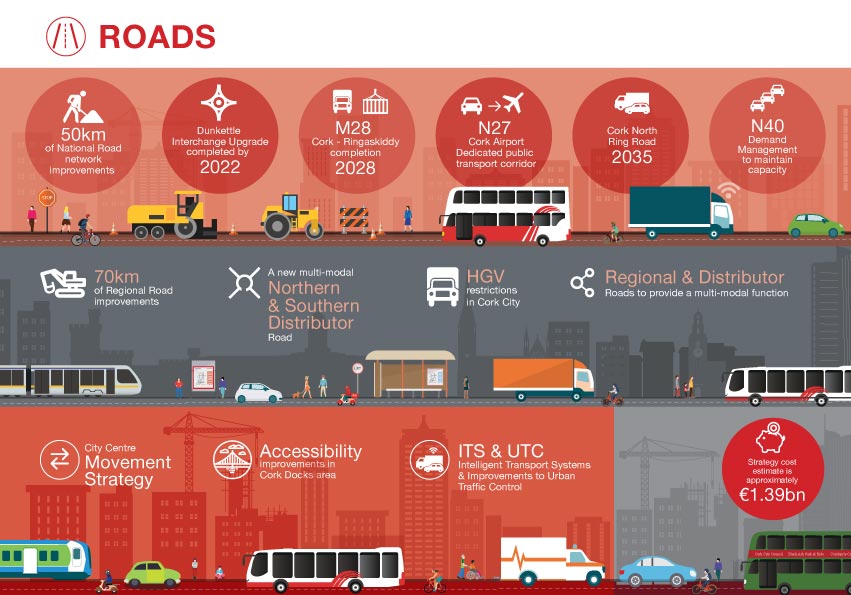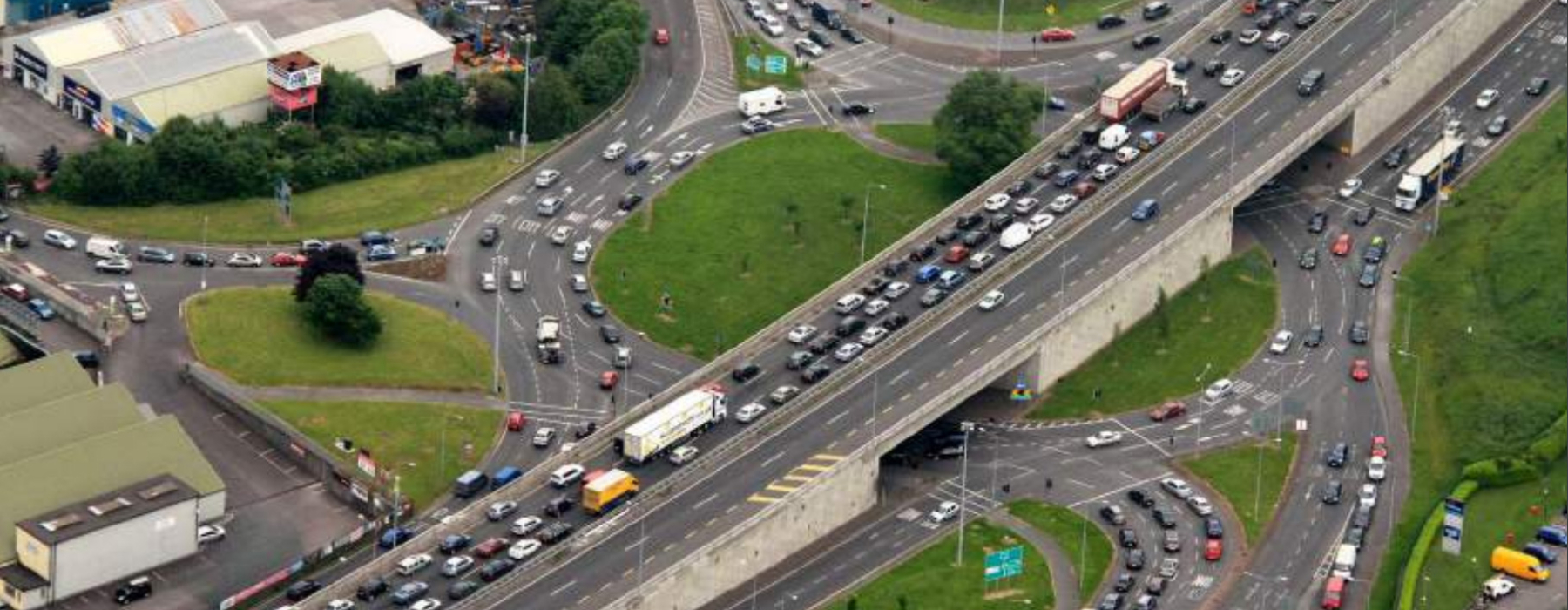The CMA has an extensive network of national, regional and local roads and streets. The road network includes not only the carriageway itself but other highway infrastructure including bridges, the Jack Lynch Tunnel, footpaths, signposting, markings, traffic signals and sophisticated traffic management systems. The street network, particularly within Cork’s urban areas, are public spaces in their own right, providing a focus for economic, social and cultural activity.
The first priority for road investment in the Strategy will be to maintain, renew, manage and operate the existing road infrastructure in a more efficient manner. Other priorities reflect a need to provide multi-modal travel particularly on new roads within urban areas, increasing the liveability and place-making functions of the urban street network and manage the network to discourage through traffic in built-up areas. The Strategy will seek to deliver on strategic development priorities for the distribution of a more compact settlement pattern based on ensuring effective integration between transport and land-use through the delivery of Public Transport Orientated Development (PTOD). PTOD will provide a sustainable economic, environmental and social case for reliable public transport services, high-quality walking and cycling routes that are permeable, safe and attractive and a people-centre public realm. This represents a marked departure from previous forms of transport planning in recent decades, where the provision of new road capacity for the private car was paramount.
CMATS proposes a limited number of new road-based projects required to facilitate the sustainable movement of people, goods and services, and to complement public transport, walking, cycling and traffic management objectives. This includes a new east-west link on the northern side of Cork City in the short medium term required to facilitate orbital bus and active travel movements and to reduce travel through the City Centre and N40 South Ring Road by HGVs and private vehicles.

